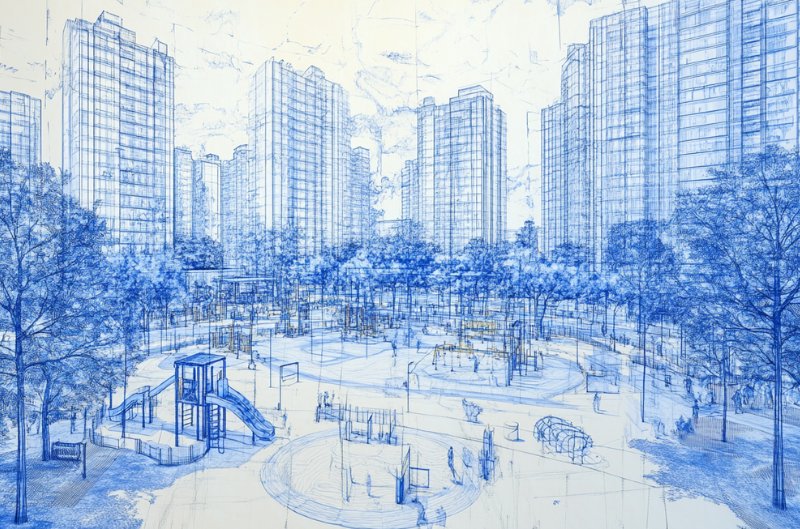
Planning an Outdoor Playground With Limited Space
Author: Austin Stanfel
Creating an engaging and safe outdoor playground in a limited space can be challenging yet rewarding. With careful planning and creative design, even small areas can be transformed into vibrant play spaces that foster children’s physical, social, and cognitive development. This article will explore strategies and best practices for maximizing play value in constrained environments.
Assessing Your Space
Before diving into the design process, thoroughly evaluating the available area is crucial. Start by accurately measuring the space and identifying potential obstacles or features impacting the playground layout. This assessment should include:
- Dimensions of the available area
- Existing structures, trees, or utility poles
- Drainage systems and topography
- Nearby buildings or other potential safety concern
Understanding these physical limitations will form the foundation for a well-thought-out and effective design plan.
Defining Goals and Objectives
Once you have a clear picture of your space, it is essential to establish specific goals for your playground. Consider the following factors:
- Target age group(s)
- Primary objectives (e.g., physical activity, educational play, social interaction)
- Desired play experiences
- Community needs and preferences
By defining these goals, you can make informed decisions throughout the design process and ensure that the final playground meets its users’ needs.
Optimizing Layout and Zoning
In a limited space, efficient use of every square foot is paramount. Consider dividing the area into distinct zones to accommodate various types of play and activities:
Active Play Zone: Dedicate space for physical activities such as climbing, sliding, and swinging.
Quiet Play Zone: Create areas for more subdued activities like reading, drawing, or sensory play.
Social Play Zone: Incorporate spaces that encourage group interaction and cooperative play.
By carefully planning these zones, you can create a diverse play environment that caters to different interests and abilities within a compact area.
Maximizing Vertical Space
When horizontal space is at a premium, thinking vertically can significantly increase a playground’s potential. Consider the following strategies:
- Install multi-level play structures that offer various activities on different tiers
- Incorporate climbing walls, rope structures, and overhead climbers
- Use net climbers and vertical maze elements to encourage upward exploration
By effectively utilizing vertical space, you can pack more play value into a small footprint while providing exciting challenges for children.
Choosing Space-Efficient Equipment
Selecting the right equipment is crucial when working with limited space. Look for:
- Multi-functional equipment that combines several play activities in one structure
- Compact versions of popular playground items, such as space-saving swing sets or seesaws
- Modular systems that can be customized to fit your specific space requirements
When choosing equipment, consider required safety zones, age-appropriateness, and versatility to ensure the best use of your available area.
Incorporating Natural Elements
Integrating natural features into your playground design can enhance its appeal and play value without consuming excessive space. Consider:
- Using existing trees for shade or as part of climbing structures
- Incorporating rocks or logs as seating or balance elements
- Creating small gardens or sensory areas with plants and textures
These natural elements can add depth to the play experience while contributing to the overall aesthetics of the space.
Ensuring Safety and Accessibility
Safety should always be a top priority in playground design, especially in confined spaces. Adhere to established safety guidelines and regulations, such as those outlined by the Consumer Product Safety Commission (CPSC)
Key considerations include:
- Providing appropriate fall surfacing materials
- Maintaining adequate spacing between equipment
- Ensuring clear sightlines for supervision
- Eliminating potential hazards such as sharp edges or entrapment risks
Additionally, ensure your playground is accessible to children of all abilities by incorporating inclusive design elements and following Americans with Disabilities Act (ADA) requirements.
Creative Surfacing Solutions
The right surfacing can significantly impact both safety and aesthetics in a small playground. Consider these options:
- Poured-in-place rubber surfacing for a seamless, low-maintenance surface
- Interlocking rubber tiles that can be easily replaced or reconfigured
- Artificial turf for a natural look with minimal upkeep
These surfacing solutions can help maximize usable space while ensuring a safe play environment.
Flexible and Movable Elements
Incorporating flexible and movable play elements can help make the most of limited space by allowing for reconfiguration and varied play experiences. Examples include:
- Portable play panels or activity boards
- Movable seating or play pods
- Loose parts for creative play
These elements can be easily rearranged or stored when not in use, providing adaptability to the playground design.
Conclusion
Designing an outdoor playground with limited space requires creativity, careful planning, and a focus on maximizing play value. By assessing your space, setting clear goals, and employing strategies such as vertical play structures and multi-functional equipment, you can create an engaging and safe play environment that makes the most of every square foot. Remember to prioritize safety, accessibility, and diverse play experiences throughout the design process. With thoughtful planning and innovative solutions, even the smallest spaces can be transformed into vibrant playgrounds that foster children’s growth, development, and joy.

